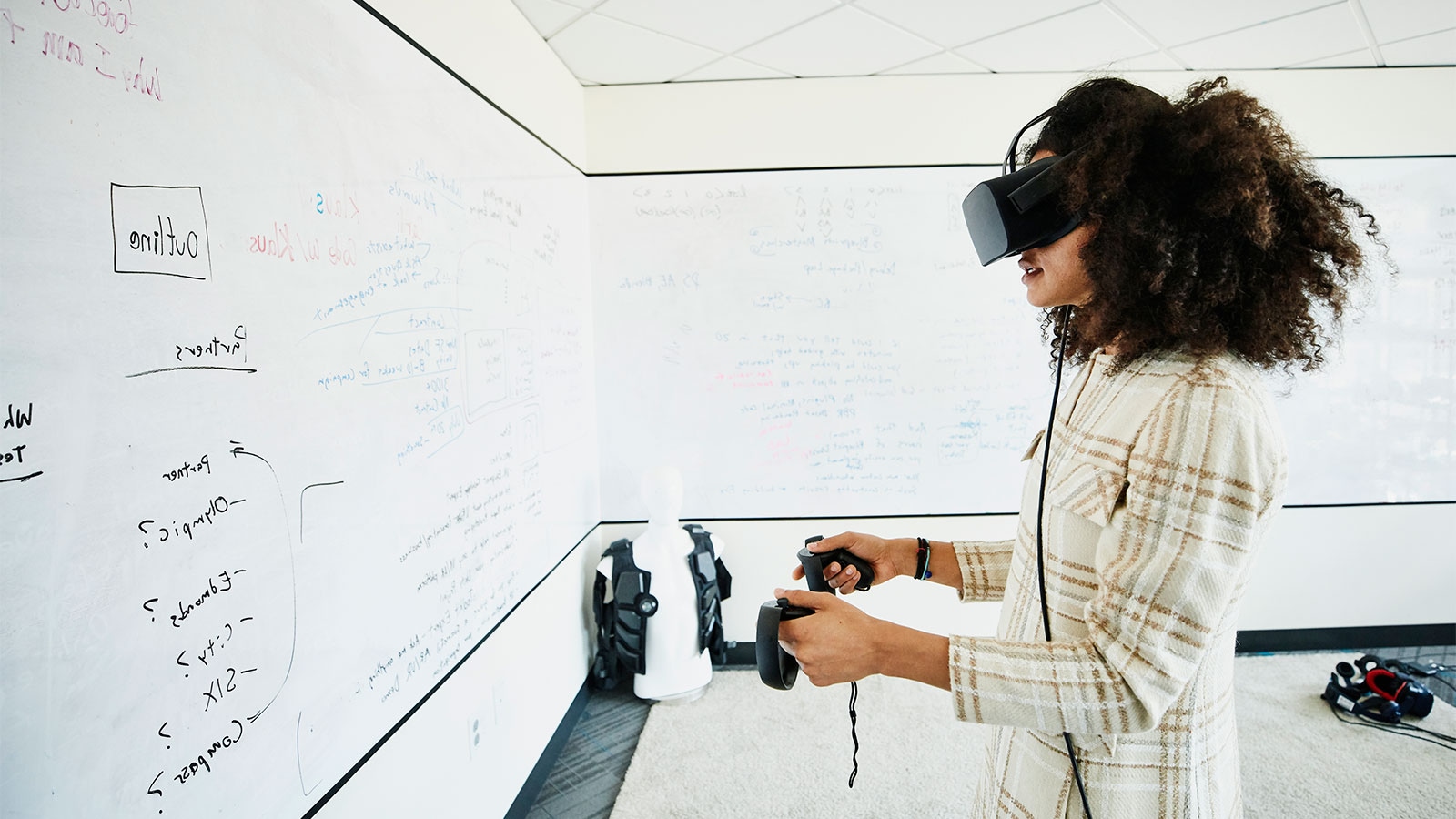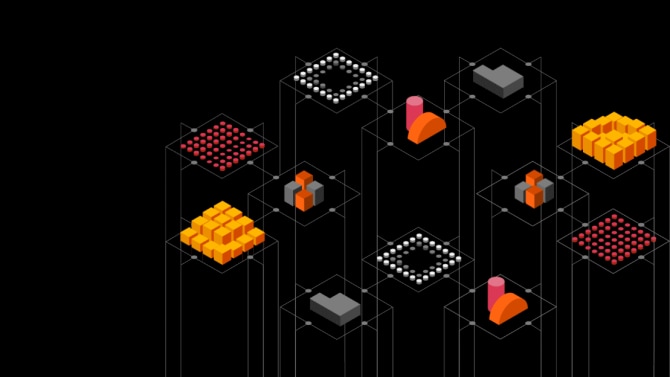What does virtual reality and the metaverse mean for training?


Summary
- VR offers an affordable, effective, remote-friendly way to provide employees with not only technical skills, but also “soft” skills such as leadership and resilience.
- With more than half of companies already integrating VR into strategy, it’s a good time for many companies to start or accelerate VR learning.
- The rise of the metaverse is creating further opportunities for VR-based upskilling and collaboration.
The upskilling challenge
Employers are facing a dilemma: Their workforce often needs to learn new skills, upgrade existing capabilities or complete compliance training. Yet the new reality of remote and hybrid work has made traditional, in-person upskilling more challenging. Online and app-based courses can fill in some gaps — but not all. So how can employers deal with this challenge?
The virtual reality advantage
Virtual reality (VR) is well known for teaching hard skills and offering realistic simulations, such as for airplane pilots or equipment maintenance. With the rise of the metaverse, VR (which is one of several ways to enter the metaverse) is also growing more common. The PwC 2022 US Metaverse Survey found that 51% of companies are either in the process of integrating VR into strategy, or have already built VR into at least one dedicated line of business. Thirty-four percent say that one of the biggest metaverse benefits they currently enjoy or foresee is “a more effective way to develop and train our people.”
But many employees also need to learn soft skills, such as leadership, resilience and managing through change. It’s often possible — and highly advantageous — to teach them too through VR and metaverse experiences.
Understanding the effectiveness of VR soft-skills training
How does VR perform as a training tool for soft skills?
We set out to answer this question with our study of VR specially designed for soft skills training. Selected employees from a group of new managers in 12 US locations took the same training — designed to address inclusive leadership — in one of three learning modalities: classroom, e-learn and v-learn (VR).
The results? The survey showed that VR can help business leaders upskill their employees faster, even at a time when training budgets may be shrinking and in-person training may be off the table.
VR learners were:

Five top findings about the value of VR in soft skills training
Here are five takeaways that can help you support your employees’ digital learning needs:
1. Employees in VR courses can be trained up to four times faster
US employees typically spend only 1% of their workweek on training and development, so employers need to be sure that they use that time productively. That’s where VR can help.
What took two hours to learn in the classroom could possibly be learned in only 30 minutes using VR. When you account for extra time needed for first-time learners to review, be fitted for and be taught to use the VR headset, V-learners still complete training three times faster than classroom learners. And that figure only accounts for the time actually spent in the classroom, not the additional time required to travel to the classroom itself.
Time to complete training

2. VR learners are more confident in applying what they’re taught
When learning soft skills, confidence is a key driver of success. In difficult circumstances, such as having to give negative feedback to an employee, people generally wish they could practice handling the situation in a safe environment. With VR, they can.
Because it provides the ability to practice in an immersive, low-stress environment, VR-based training results in higher confidence levels and an improved ability to actually apply the learning on the job. In fact, learners trained with VR were up to 275% more confident to act on what they learned after training — a 40% improvement over classroom and 35% improvement over e-learn training.
3. Employees are more emotionally connected to VR content
People connect, understand and remember things more deeply when their emotions are involved. (We learned that during the VR study and multiple BXT experiences, where we gathered different viewpoints and worked together to identify what matters most.) Simulation-based learning in VR gives individuals the opportunity to feel as if they’ve had a meaningful experience.
V-learners felt 3.75 times more emotionally connected to the content than classroom learners and 2.3 times more connected than e-learners. Three-quarters of learners surveyed said that during the VR course on diversity and inclusion, they had a wake-up-call moment and realized that they were not as inclusive as they thought they were.
4. VR learners are more focused
Today’s learners are often impatient, distracted and overwhelmed. Many learners will not watch a video for its duration, and smartphones are a leading cause of interruption and distraction.
With VR learning, users are significantly less distracted. In a VR headset, simulations and immersive experiences command the individual’s vision and attention. There are no interruptions and no options to multitask. In our study, VR-trained employees were up to four times more focused during training than their e-learning peers and 1.5 times more focused than their classroom colleagues. When learners are immersed in a VR experience, they tend to get more out of the training and have better outcomes.

5. VR learning can be more cost-effective at scale
In the past, VR was too expensive, complicated and challenging to deploy outside of a small group. Today, the cost of an enterprise headset ecosystem is a one-time fee of less than $1,000, and these units can be managed like any other enterprise mobile device and can be used repeatedly to deliver training. Studios of all sizes are developing compelling content, while vendors are creating software packages to enable non-VR developers to create their own content in a cost-effective way. Elsewhere, some big learning-management-system players are enabling VR content to be easily integrated into their platforms.
The value VR provides is unmistakable when used appropriately. In our study, we found that, when delivered to enough learners, VR training is estimated to be more cost-effective at scale than classroom or e-learning. Because VR content initially requires up to a 48% greater investment than similar classroom or e-learn courses, it’s essential to have enough learners to help make this approach cost-effective. At 375 learners, VR training achieved cost parity with classroom learning. At 3,000 learners, VR training became 52% more cost-effective than classroom. At 1,950 learners, VR training achieved cost parity with e-learn. The more people you train, the higher your return will likely be in terms of employee time saved during training, as well as course facilitation and other out-of-pocket cost savings.
Training modality cost per learner

Building a blended learning curriculum
VR likely won’t fully replace classroom training or e-learning anytime soon. But as the metaverse accelerates and remote work continues to grow, VR learning should be part of most companies’ blended learning curriculum. When done right, VR learning, in and out of the metaverse, includes the key elements of business expertise to tackle challenges, a human-centered experience and technology that boosts productivity without sacrificing quality.
For example, we developed a VR soft skills course that enables executives and staff to practice new sales approaches. Learners get to make a pitch to a virtual CEO, but if they rely on business-as-usual sales techniques, the virtual CEO asks them to leave her office. However, if learners apply skills that demonstrate how they can bring value to the CEO’s company, they get a “virtual contract” at the end of the conversation.
VR learning set in the metaverse can increase organizational familiarity with the metaverse’s technologies and opportunities. In the PwC 2022 US Metaverse Survey, “onboarding and training” was the metaverse use case that companies said they’re most likely to explore right now. In other words, it’s the most common way in which companies plan to get started in the metaverse.


Digital assets are changing the game
Take your digital assets vision from plan to reality
Chief AI Engineering Officer, PwC US
Andrea Mower
Senior Manager, Metaverse Specialist, Innovation Hub, PwC US









